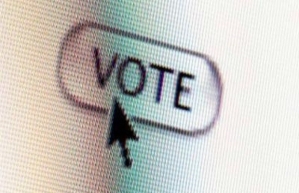 The year 2016, which is still young, has a far-reaching electoral schedule. According to the register of the International Foundation for Electoral Systems (IFES), 30 countries in all five continents will go to the polls to elect Presidents, renew their Congresses or carry out referenda.
The year 2016, which is still young, has a far-reaching electoral schedule. According to the register of the International Foundation for Electoral Systems (IFES), 30 countries in all five continents will go to the polls to elect Presidents, renew their Congresses or carry out referenda.
This electoral schedule will be especially intense in Africa and America, where eight nations in each continent will hold elections. Europe has seven scheduled elections, while Asia and Oceania have three each.
Among the European processes we can highlight the one in Switzerland, a pioneer nation when it comes to e-voting models, which will hold a referendum on February 28 where its citizens will be allowed to vote from home or any other place with an Internet connection.
In the case of America, both manual and automated elections will take place. For example, while Nicaragua, the Dominican Republic, Bolivia and Haiti will continue using outdated voting systems which have in the past raised allegations of fraud and mistrust, the United States and Venezuela will deploy their automated voting models.
On the other hand, Peru will continue trying to create their own e-voting model. The country’s electoral authorities are convinced of the benefits such system would bring to the nation. Therefore, they expect to increase the scope of their testing.
During the United States presidential elections, 95% of the votes will be electronically processed. This will happen through the use of several technologies, from optical scanners used to digitize paper ballots to e-voting in some jurisdictions. It’s worth mentioning that each of the approximately 10,000 electoral jurisdictions in the country can independently choose which system to use.
In Venezuela regional elections will be held at the end of the year, when the automated system deployed since 2004 will be used again; this system is based on touchscreen voting machines able to produce voting vouchers, connected to e-ballots for data input.
Africa will hold eight elections, all of which will elect new parliaments, and one will elect the new president; the use of paper ballots is prevalent in this continent.
Finally, Asia has a country that started the process of automating their elections in 2010, the Philippines. The nation will hold general elections in May, and although it will retain manual voting, the processing of the votes and tabulation of results will be handled by technology (i.e. vote counting, transmission, tallying and results publication).
This being said, 2016 will be a year where e-voting will be ratified in developed countries but will be used in emerging nations as well, which shows that the choice to have secure and transparent elections has given an electoral advantage to several countries, even though they do not hold a privileged spot in global geopolitics.

 During 2015, some
During 2015, some